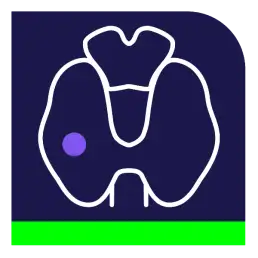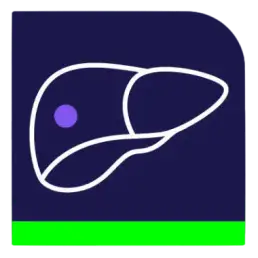O'RADS Calculator & Report Generator v. 2022
This calculator includes latest updates published in September 2023.
Select the imaging modality:
References:
- Andreotti RF, Timmerman D, Benacerraf BR, et al. Ovarian-Adnexal Reporting Lexicon for Ultrasound: A White Paper of the ACR Ovarian-Adnexal Reporting and Data System Committee (published correction appears in J Am Coll Radiol. 2019 Mar;16(3):403-406]. J Am Coll Radiol. 2018;15(10):1415-1429. doi:10.1016/j.jacr.2018.07.004
- Reinhold C, Rockall A, Sadowski EA, et al. Ovarian-Adnexal Reporting Lexicon for MRI: A White Paper of the ACR Ovarian-Adnexal Reporting and Data Systems MRI Committee. J Am Coll Radiol. 2021;18(5):713-729. doi:10.1016/j.jacr.2020.12.022
- Andreotti RF, Timmerman D, Strachowski LM, et al. O-RADS US Risk Stratification and Management System: A Consensus Guideline from the ACR Ovarian-Adnexal Reporting and Data System Committee. Radiology. 2020;294(1):168-185. doi:10.1148/radiol.2019191150
- O-RADS US v2022: An Update from the American College of Radiology’s Ovarian-Adnexal Reporting and Data System US Committee Lori M. Strachowski, Priyanka Jha, Catherine H. Phillips, Misty M. Blanchette Porter, Wouter Froyman, Phyllis Glanc, Yang Guo, Maitray D. Patel, Caroline Reinhold, Elizabeth J. Suh-Burgmann, Dirk Timmerman, and Rochelle F. Andreotti Radiology 2023 308:3
All images in this calculator have been obtained from ACR's white paper mentioned in the references above.
Related Calculators:

More about the ACR ORADS Calculator:
The Ovarian-Adnexal Reporting and Data Systems (O-RADS ™) initiative, spearheaded by the American College of Radiology (ACR®), aims to standardize the evaluation of adnexal lesions by creating a unified lexicon for MRI and ultrasound (US) imaging. This comprehensive effort addresses inconsistencies in reporting terminology, harmonizing interpretation practices and facilitating seamless communication between radiologists and referring clinicians. By establishing standardized descriptors, O-RADS enhances interpretation consistency, improves diagnostic accuracy, and optimizes patient management strategies across diverse clinical settings. Our O-RADS calculator was developed to streamline the application of these lexicons in clinical practice, promoting efficient and accurate evaluations.
Standardized Lexicons for MRI and US
The O-RADS MRI and US lexicons are pivotal components of this initiative, providing structured frameworks for adnexal lesion evaluation:
- O-RADS MRI Lexicon:
- Developed by the ACR O-RADS MRI Committee, this lexicon features seven categories of descriptors tailored to adnexal masses.
- Descriptors incorporate morphological and functional MRI properties, including signal intensity, enhancement patterns, and lesion morphology, enabling precise lesion characterization.
- The lexicon was developed using expert consensus and evidence-based principles to ensure reliability and clinical relevance.
- O-RADS US Lexicon:
- Crafted through a consensus-driven, modified Delphi process, this lexicon standardizes ultrasound terminology for adnexal lesions.
- Descriptors include lesion size, internal architecture, echogenicity, vascular flow, and other ultrasound features.
- The lexicon supports consistent interpretation and communication of findings across clinical settings.
Benefits of Integration into Clinical Practice
Integrating the O-RADS calculator into routine clinical workflows offers numerous benefits:
- Facilitates clearer communication between radiologists and referring physicians, reducing ambiguity and fostering collaboration.
- Enhances diagnostic accuracy by providing structured, evidence-based frameworks for lesion evaluation.
- Promotes personalized management plans, guiding clinicians to tailor interventions based on lesion-specific risk profiles.
- Streamlines clinical decision-making through automated O-RADS scoring, saving time and reducing the potential for human error.
Risk Stratification and Validation
Recent studies highlight the efficacy of the O-RADS lexicon and associated tools:
- The O-RADS lexicon, combined with the IOTA 2-step strategy, effectively stratifies patients into risk groups for malignancy.
- Validation studies demonstrate that the O-RADS 2 category has a malignancy rate of approximately 1%, underscoring the need for precise risk assessment in guiding patient care.
- These findings reinforce the importance of using standardized descriptors and automated tools to enhance risk stratification accuracy.
Role of the O-RADS Calculator
The O-RADS calculator is a transformative tool that leverages the structured descriptors of the O-RADS lexicons to generate comprehensive risk assessments:
- Integrates data from both MRI and US findings, ensuring a holistic evaluation of adnexal lesions.
- Automates the scoring process, allowing radiologists to quickly determine lesion risk profiles with minimal effort.
- Supports evidence-based decision-making by aligning imaging findings with established risk stratification categories.
- Improves clinical workflow efficiency, enabling radiologists to focus on nuanced interpretations and patient care.
Implications for Patient Care
By streamlining the interpretation and reporting of adnexal lesions, the O-RADS calculator enhances clinical outcomes in several ways:
- Early Detection and Intervention: Standardized risk stratification ensures timely identification and management of high-risk lesions, reducing the likelihood of missed malignancies.
- Reduced Unnecessary Procedures: Accurate classification minimizes unwarranted biopsies or surgeries for benign lesions.
- Enhanced Patient Confidence: Clear, standardized reports build trust by providing patients with consistent and transparent diagnostic information.
In summary, the O-RADS initiative and its associated calculator represent a significant advancement in the evaluation and management of adnexal lesions. By offering a unified approach to reporting and risk stratification, these tools empower healthcare providers to deliver precise, efficient, and patient-centered care.





excelente
Good
This is very nice BUT need to fix one issue. When you have an ovarian lesion that has septations but NO solid component, the O-RADS algorithm for the next step is to make an assessment of whether the INNER wall and/or septations are smooth or irregular. As of right now (08/05/2023), your calculator does not include this step–instead, it incorrectly asks the user to assess the OUTER contour. Assessment of the OUTER contour is appropriate for a mass with solid components, but not for a cyst (with or without septations) that does not have a solid component. Fix this issue and the calculator will be accurate–but otherwise, nicely done.
Hello Dr. Patel,
Thank you so much for bringing this error to my attention. I have made the necessary changes and now, if the lesion is completely cystic, the calculator will ask for “septations (if applicable) and internal contour†instead of the outer contour. I really appreciate your feedback.
if we are using power doppler for ovarian lesion what is the color score to be followed ? If we use the routine color doppler scoring will it be an exaggeration of the score ?
Excelente
The report generator is brilliant. Bravo!
Thank you very much for this excellent tool, congratulations. Greetings from Ecuador.
great !
Words can’t express my thanks! 🙏
Didn’t work for a unilocular ovarian cyst-without septation. still required i describe septation
Hello and thank you for your feedback. Are you encountering an error in the calculator, or the report generator? Is it for an MRI study, or ultrasound?